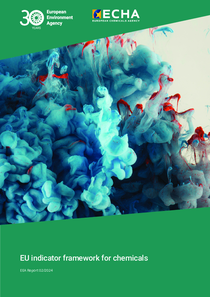EU indicator framework for chemicals

European Environment Agency, Copenhagen
Publications Office of the European Union - Luxembourg
2024
65 p.
chemicals ; EU law ; dangerous substances ; environmental impact assessment ; product safety ; sustainable development ; recycling of materials
Chemicals
https://data.europa.eu/doi/10.2800/10922
English
Bibliogr.
"The chemicals strategy for sustainability towards a toxic-free environment (CSS) embraces two overarching goals of the chemicals legislation: preventing harm to people and the planet from hazardous chemicals and their toxic effects and supporting EU industry in the production of safe and sustainable chemicals. As one of the CSS actions, the European Environment Agency (EEA), the European Chemicals Agency (ECHA) and the European Commission (EC) have developed an indicator framework on chemicals to support these goals. The aims of the framework are to monitor the drivers and impacts of chemical pollution and measure the effectiveness of chemicals legislation. The framework has an online dashboard (available here: https://www.eea.europa.eu/ en/european-zero-pollution-dashboards/chemicals-strategy-for-sustainability) and is accompanied by this synthesis report jointly drafted by the EEA and ECHA. Existing data streams, indicators and other information were assessed for their potential effectiveness in monitoring trends in chemicals production, use, emission, and impact. The proposed framework consists of existing and newly developed indicators and signals. The latter are more limited in terms of spatial and time coverage. Some existing indicators are also part of other related monitoring frameworks such as the zero pollution action plan. While individual indicators may not be able to measure progress on reducing the risks/unwanted impacts of chemicals directly, they should, as a whole, provide a fact-based picture to support the assessment of the effectiveness of the legislative framework for chemicals and the identification of the need for future action. However, since the impact of the current chemicals policy actions will only become apparent over time, the current dashboard and this report should be seen as a baseline."
Digital
ISBN (PDF) : 978-92-9480-634-5